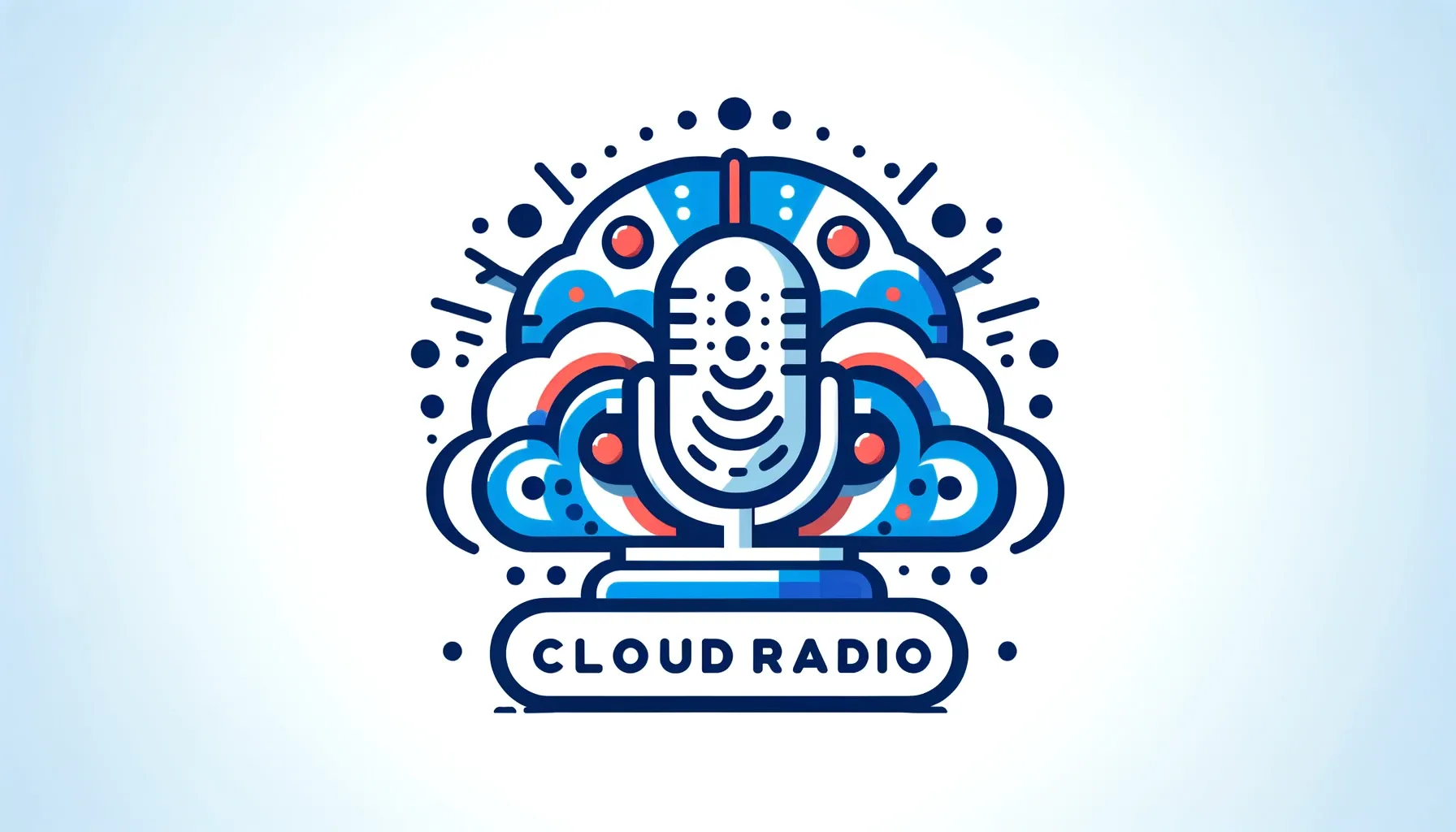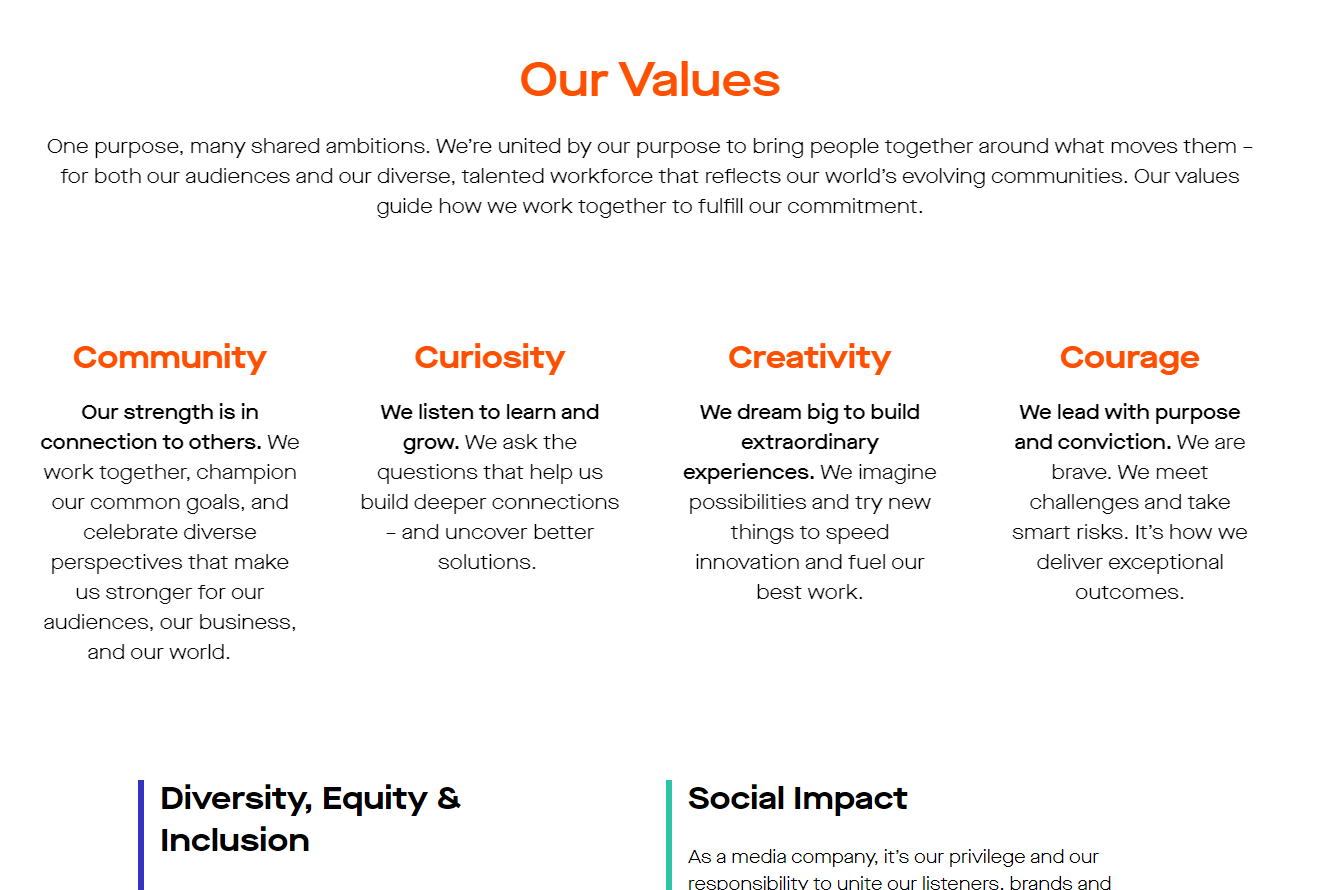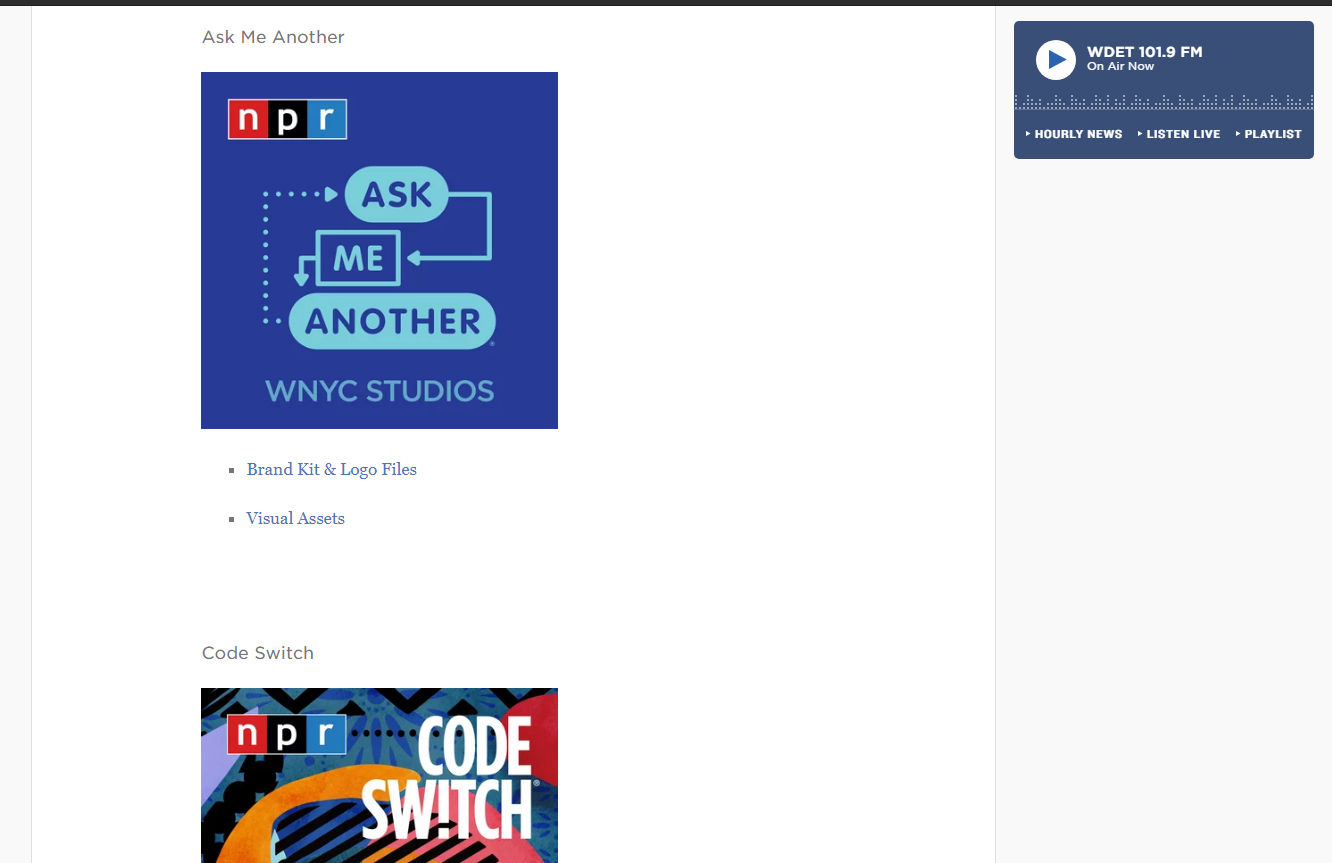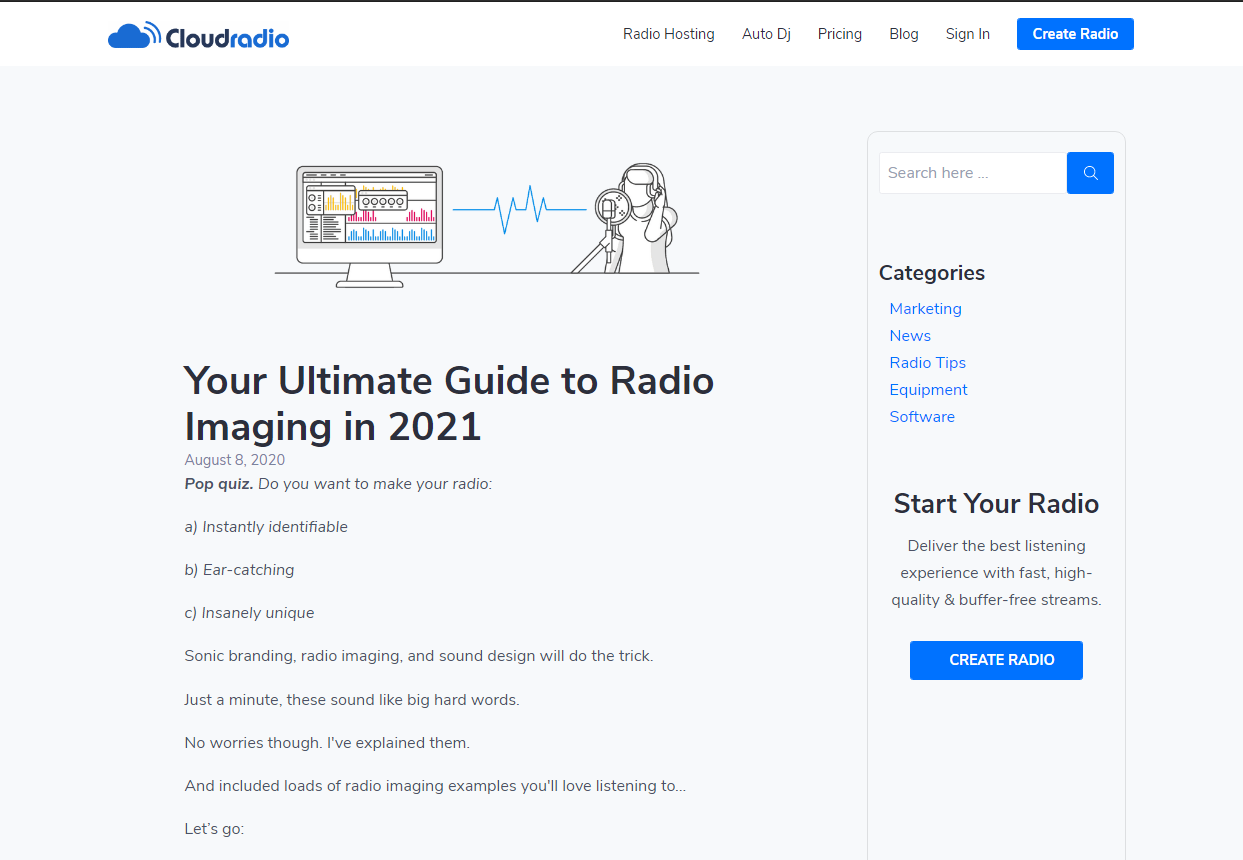Branding 101: For Radio Stations and Podcasts
Are you trying to create a unique podcast or radio station? You need to brand it the right way. Check these tips:

This blog has been in the works for a long time. And it’s really special because it will teach you all you newbies and pros alike how to brand your radio station or podcast.
It’s time to throw all your misconceptions about branding out of the window.
Branding is not all about creating a logo that is distinct and easily identifiable. It’s far from creating merchandise such as hats or car stickers.
So, what is it then? Well, gear up. And keep reading to find what it is and the steps that you can take to brand your podcast or radio!
What is a brand?
A brand is not the company’s name, logo, or graphics. Instead, it’s a feeling that your branding assets evoke. For instance, what does a cold Coke feel like? Refreshment. Coolness. Desire.
Well, Coca-Cola has spent huge sums of money creating its brand. There are definitely other soda companies out there. But you rarely crave them, and even if they taste better, there’s a perception that you have in your mind that a Coke might be superior.
You will also find the same fanatic behavior of Apple users. They perceive the brand as more superior, classy, and refined. It will be hard to convince them to use Android devices, which certainly offer more features and customization.
So at the end of the day, a brand is really the perception that people have about the company or product. What do you want people to perceive about your radio station or podcast?
Closer to home, the BBC is a clear example of a broadcasting corporation that has figured out how to brand its radio stations. The BBC World Service holds the perception for being informative and authoritative. Someone may hear news elsewhere but reconfirm it by listening to the BBC World Service.
So if you’re building a podcast related to current affairs, you’d want to create the perception that it’s the only source for informative and clear discussions.
Similarly, if you have a Hits radio station, branding it will entail building up its image as the only source of great entertainment.
Now that you know what a brand is let’s look at 10 easy steps that you can follow to create a distinguished brand for your radio station or podcast.
10 Steps to Brand Your Radio Station or Podcast
I can have the perception that someone is terribly broke. Only for them to do me a kind deed that changes my perception.
Even if you have a podcast or station with weak branding, you can always rebrand.
Radio stations do this all the time. After the rebrand, they will usually change their logos, introduce new presenters, experiment with a new genre, and use terms like, “We’re new and fresh.”
For instance:
Entercom Communications, a radio, and podcasting company, recently rebranded to Audacy.
The CEO stated that they had outgrown the name Entercom. And they announced a new round of shows, including a partnership with Demi Lovato.
Their core competitor iHeartMedia had also successfully rebranded in 2014 where they changed their name from Clear Channel.
Enough with examples! Let’s take a closer look at how to brand your podcast or radio station.
1) Redefine your compass
Everything needs a purpose for it to succeed. You can point your radio or podcast in a specific direction by leveraging the brand compass.
The key pillars of a great brand compass include:
● Mission statement - It’s an action-packed statement that tells your target audience your purpose (why you exist) and how you intend to serve them best.
Don’t write a whole paragraph. It doesn’t have to be too concrete. For example, JetBlue’s mission statement is “To inspire humanity — both in the air and on the ground.” Yours can be, “To be a leader in quality news and current affairs podcasting.”
● Vision - It’s what you plan to achieve in the future—your goals. And you can say how you plan to get there. For instance, Netflix’s vision is“ Becoming the best global entertainment distribution service.”
● Values - Values are the qualities your brand holds dear. The recently rebranded Audacy lists its values as “community, curiosity, creativity, and courage.”
● Objectives - Objectives are your “vision” distilled into actionable goals. You don’t have to make them public, and they can be ultra-specific.

Audacy About Us Page
2) Gain a firm understanding of the audience
The goal of branding your radio or podcast is to influence the perceptions of your core audience.
You need to know what they like, what they relate to, and how they behave. So, without a firm understanding of your audience, you might as well start planning to fail.
Don’t assume that you know what they want, even if you are the same age as them. Conduct proper audience research by following these steps:
● Start off by preparing a list of questions that you want answers to, for instance, what is my core audience age, where do they live, what are their interests?
● Find people that are willing to be interviewed for your core demographic research;
● Check what your representative demographic is saying on social media;
● Research about the podcast or radio stations they listen to;
● Find out what’s unique about the media they consume;
● Create one persona that embodies the characteristics of that one person who you wish to win over to your brand.
3) Personality
Now, here is an interesting question: How would your brand behave if it was a living person?
If your brand is an upbeat hits radio station, perhaps it is outgoing, adventurous, and talkative. If the brand is a true-crime podcast, perhaps it is cautious, reserved, and fearless.
After figuring out your brand’s personality, you should express it in everything that you do, from your imaging to your content.
4) Why are we unique?
The next step in your branding journey is to set yourself apart from all other competitors known and unknown to your brand. It’s at this point that you can think of creating a value proposition.
Capital FM reasserts its value proposition by stating that it’s “The UK’s No.1 Music Station.” You might say that you also have the best crimes podcast.
That‘s a value proposition. And there are numerous other ways to set yourself apart and show why you are the best.
5) Make a promise to your listeners
All companies promise something to their customers. With every car that Toyota manufactures, they try to live up to their promise of reliability.
Similarly, you need to make promises to your listener. For instance, you can constantly tell them that you’ll be playing all their favorite hits all day long.
The promise needs to be fresh in the audience’s mind. So, like a lover, you will need to constantly state the promise and reassure listeners that you’re delivering.
For instance, at the end of each recording, you can cautiously mention that the program featured all the latest hits. That helps shape your listener’s perception, cementing their loyalty to your brand.
6) Creating a visual identity
Developing a visual identity is the more famous way of branding a radio station or podcast. You need to be easily identifiable in all areas that your listeners might interact with you.
The basic visual elements that you need for your brand include:
● Brand color palettes - It consists of a selection of colors that will be used in your website design, logos, and other visual elements. Learn how to choose a brand color palette.
● Create a logo for your radio, and you might need up to four variations of the same logo to cater to different digital and print uses.
● Typography - You also need to choose a unique font that you will use on your websites and for your merchandise.
● Icons and illustrations - Don’t just reuse the icons or illustrations you find online. Instead, consider hiring a freelance designer on a site such as Fiverr to come up with your custom graphics, and this will not be expensive at all.
NPR creates unique logos, fonts, colors, and design elements for their podcasts and programs. Check out the branding kits published by NPR.

7) Sound brand your podcast or radio station, audio branding
For radio stations and podcasts, audio is our main medium. And we ought to think about how to brand ourselves and our sound. Radio stations cultivate a unique sound by leveraging imaging elements, such as:
● Jingles
● Sweepers
● Music beds
● Liners
● Bumpers/Stingers
● Intros & Outros
Here is an example of a sweeper used to audio brand a radio station:
Apart from using radio imaging, you can set your radio station apart by trying to create a unique sound through audio processing.
Audio branding of your podcast is also possible. Influenceandco.com says that the first way to set your podcast apart is to produce high-quality sound devoid of any issues such as echos.
You can also implement some background music but it should be low and not interfere with the speakers. Podcasts can also produce jingles and unique intros and outros.
 Learn all about radio imaging types.
Learn all about radio imaging types.
8) Verbal identity
Your verbal identity describes the language and words you use in your social media posts, blogs, and other forms of written communication. Are you formal or informal? Does the writing seem snappy and spirited or more toned down?
9) Brand positioning - Telling them why you are different
Positioning your podcast or radio station is all about defining the benefits that should come to mind when a listener thinks of your brand.
It also entails differentiating yourself from your competitors who may have similar content. For instance, radio stations may differentiate themselves by having a celebrity on their team.
A station may also differentiate itself by being the exclusive choice for all the hottest interviews and new music releases.
Some radio stations are funny as hell. They have great banter between the hosts and unbelievable pranks.
The easiest way to position your brand is to conduct a review of your competitors and determine what they could be doing better. After you find a unique benefit, make sure that you promote it to your listeners for it to stick in their minds.
10) Create memorable experiences
You have to create real-life experiences where your potential audience can interact and know your brand further.
Companies such as Coca-Cola try to create memorable events by sponsoring music events, games, TV programs, etc.
Consider other ways that you can create such experiences, and they don’t have to be in-person events. For instance, you can decide to host webinars with your fans.
Another way radio stations and podcasts can create memorable experiences is by running contests. They will be memorable long after the actual event to all those that participated or won prizes.
It’s going to pay off!
If you’re looking at the challenging aspect of branding your radio station or podcast, you may have reservations as to whether it will pay off.
Yes, it’s going to pay off and change the perception of your listeners. The things that matter to us are important because we think they matter.


